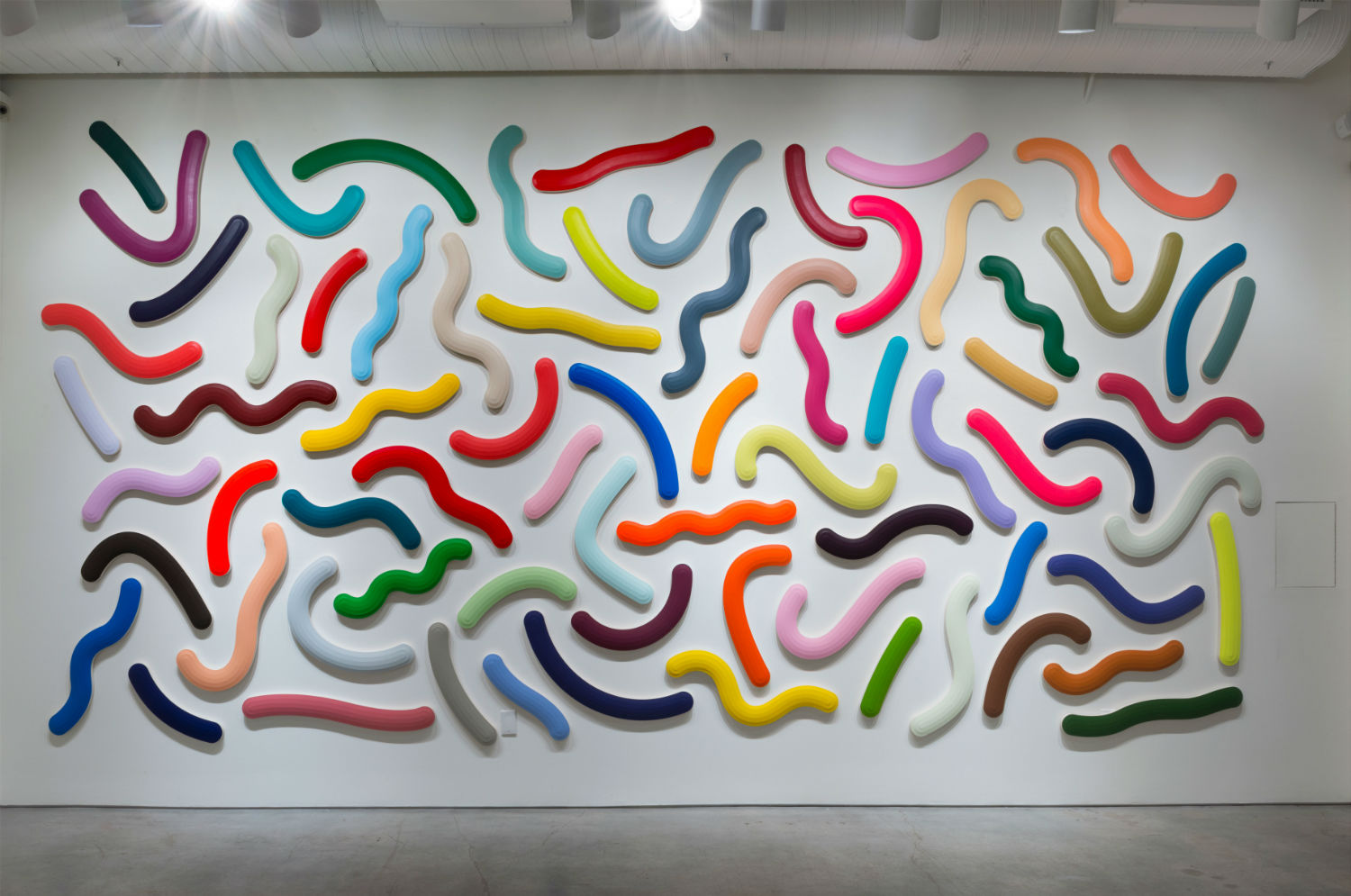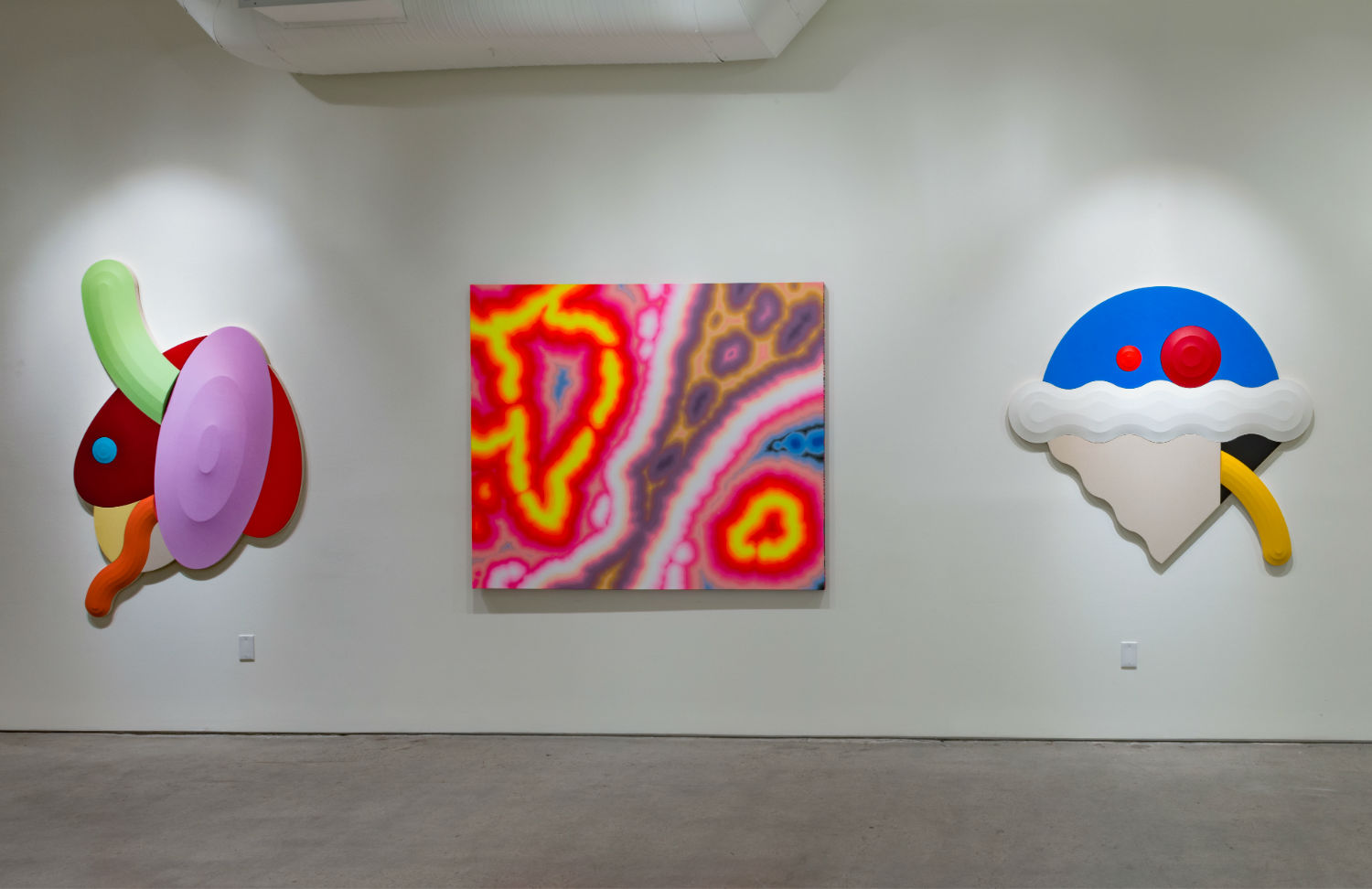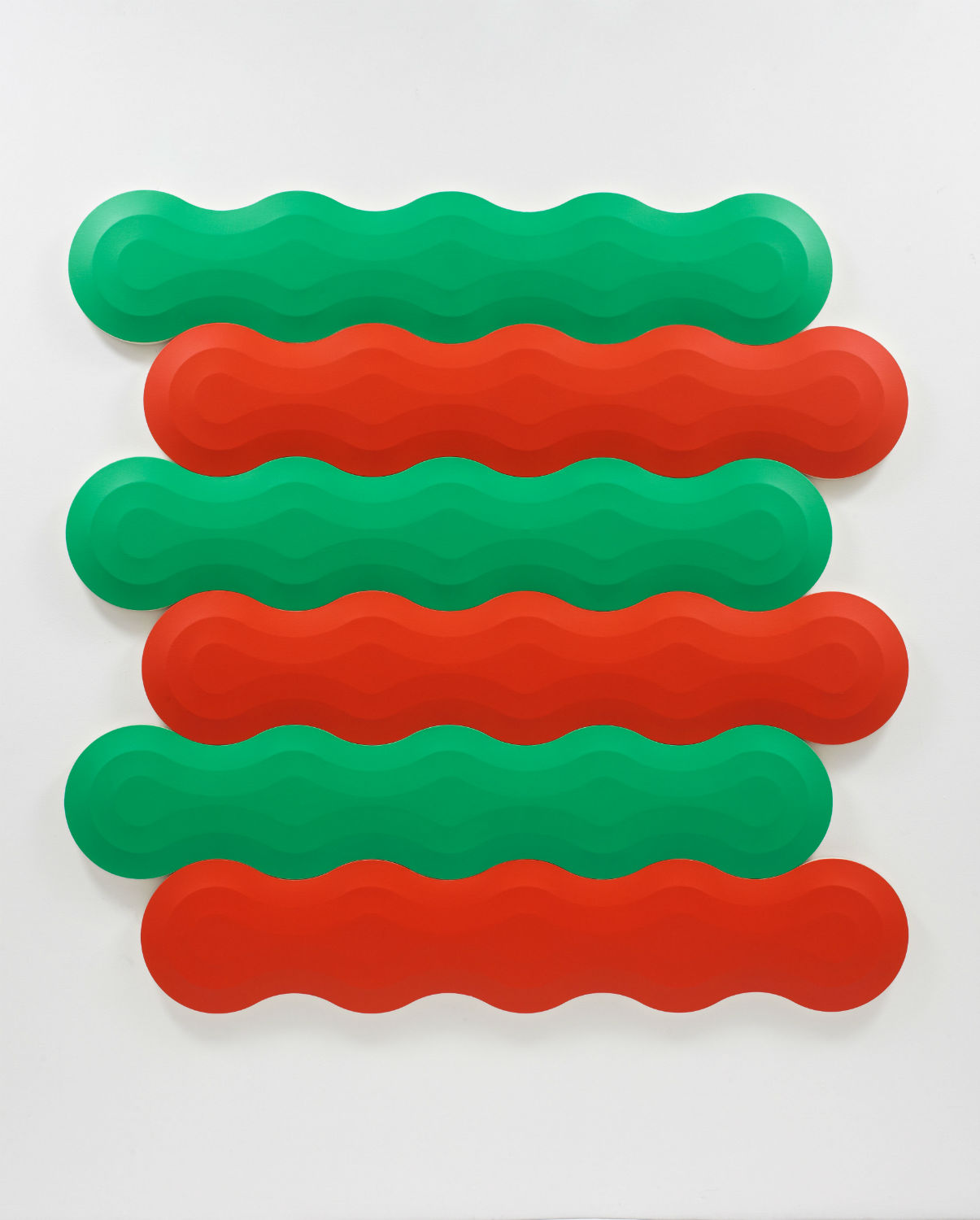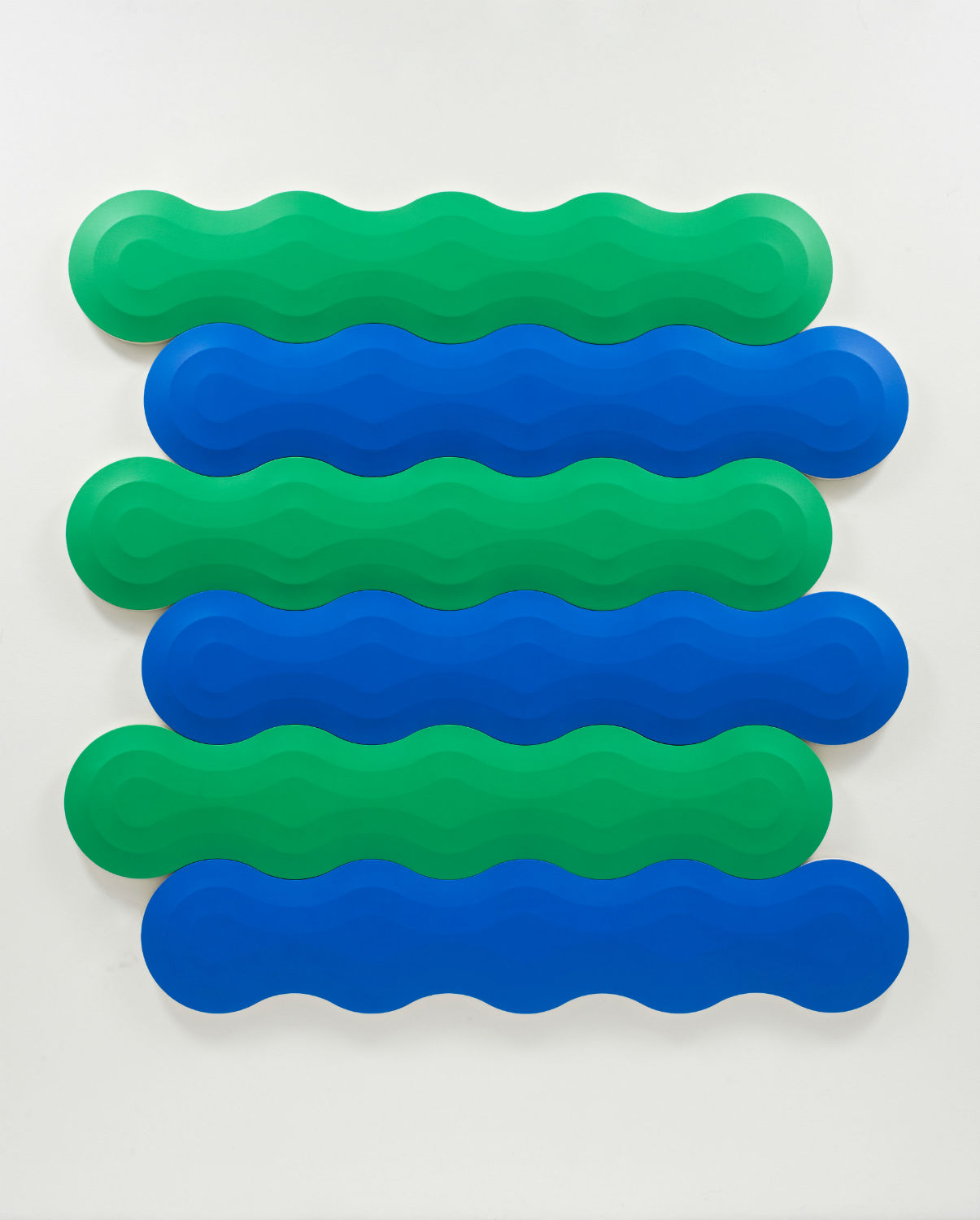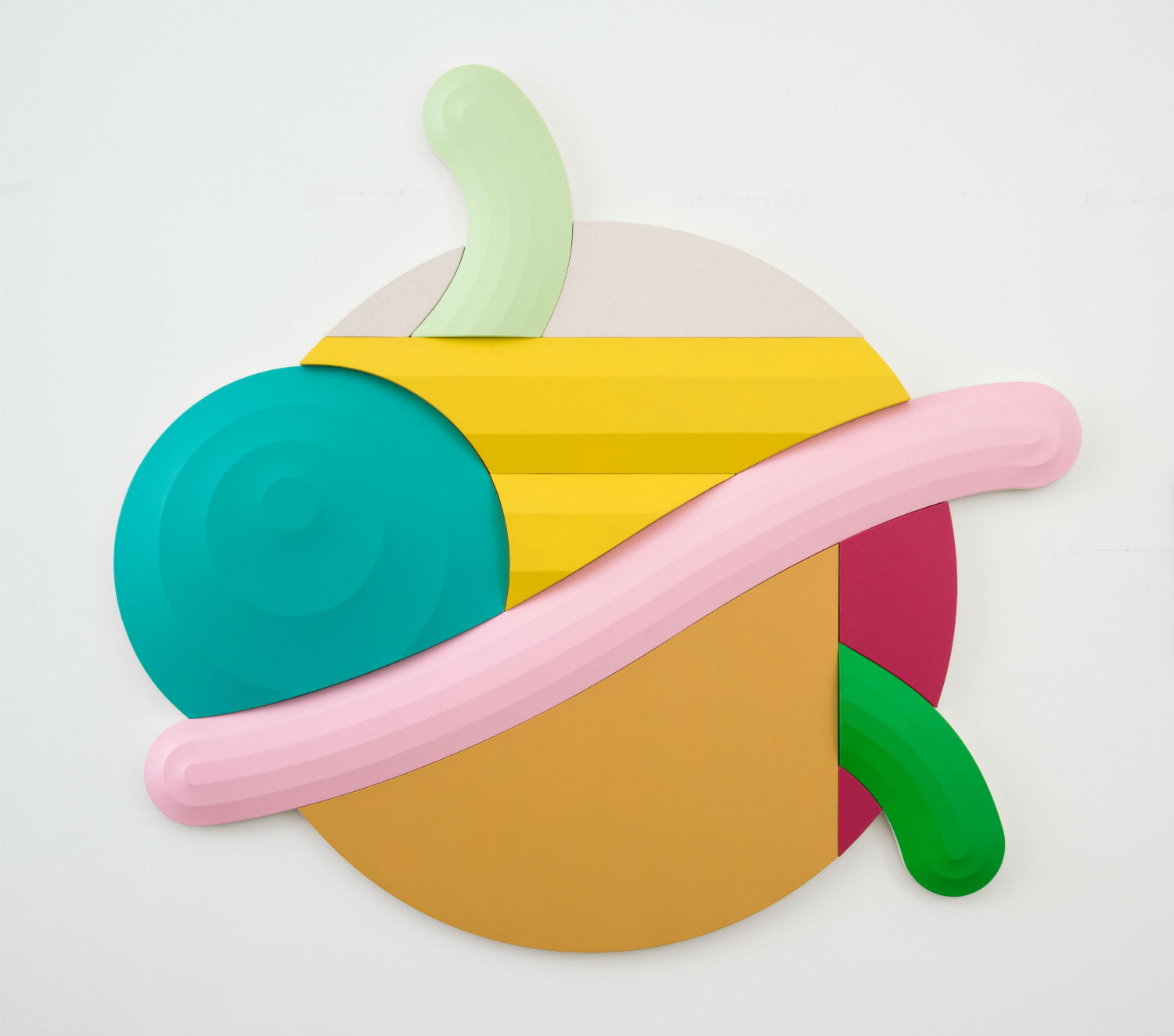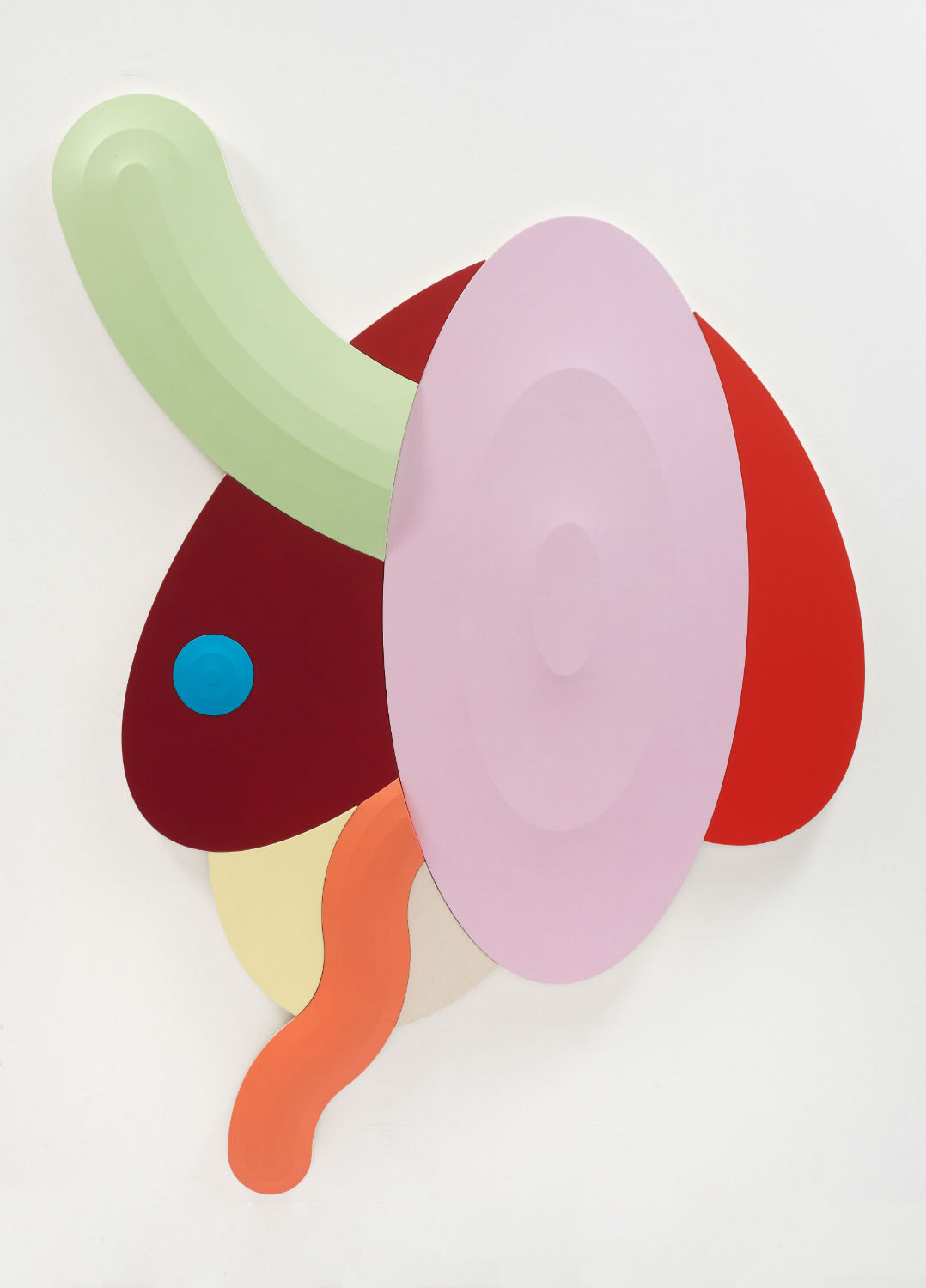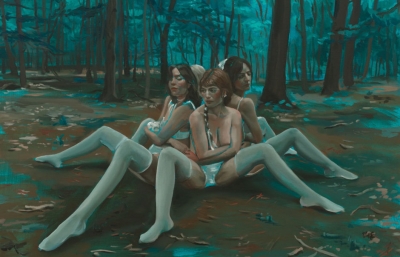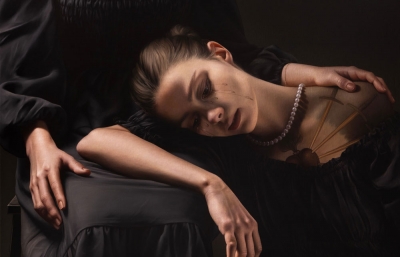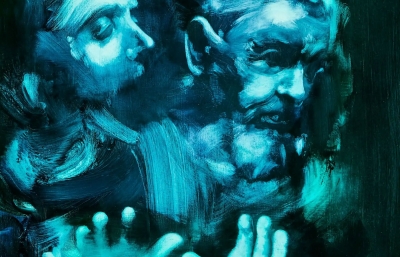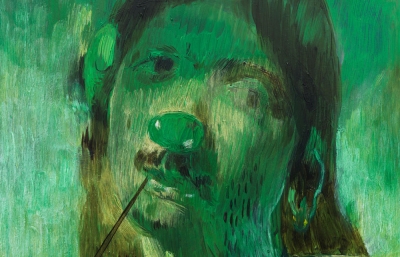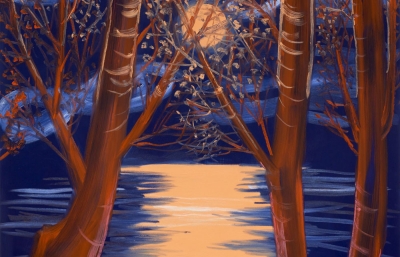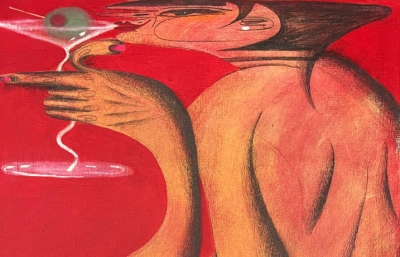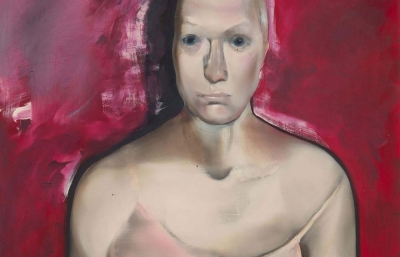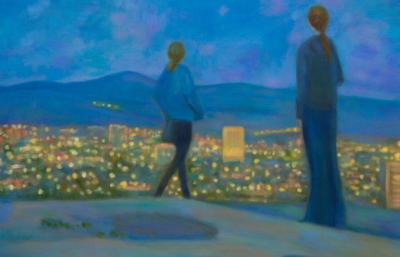I've known Josh Sperling my whole life, since we started the first day of preschool as one-year-olds. We've probably spent more time together than with our own siblings, and I still don't really get the feeling that I fully know him. I know he's a caring friend, a good partner, a meticulous worker, an impressive artist, and a voice of reason, but there are still some things that are largely a mystery.
Portrait by Bryan Derballa
Josh has got to be free to release a part of him that belongs to no one, whether that freedom is a couple of years of disappearing, or a few days alone in the studio. He's gonna do him, and I get the feeling that he needs it that way. Like a fish, just when you think you’ve caught it, he slips out of your hands, jumps back into the water, and swims away into a world where you can't follow. Then he reappears and tells you about as much as a fish might if you tried to ask it a question. You don't know where he went, or what he was up to, but you know it was cool and that he swam through with style and grace, artfully missing a few hooks along the way. —Sam Friedman
Sam Friedman: We've known each other since the first day of preschool. I only have two memories from that time. One is dropping a Coasters record on the sidewalk that I brought for show and tell, and the other is hiding behind an orange La-Z-Boy so other kids couldn't see me pick my nose. Do you have any memories from those days?
Josh Sperling: My first memory with you is when we were a little older, like five or six. I remember you came to my house to play, and we hadn't seen each other in a while because we went to different elementary schools, and I felt awkward before you came over. Like wondering if you had changed and we would still be friends. I remember swimming in the stream in my backyard which is funny to me now because the thing is, like, one foot deep.
When we were little kids, you and your father had a pretty epic model railroad set up that occupied most of his garage. I've wanted to build one myself ever since, but haven't yet. When I found out that Neil Young was really into model railroads it reinforced this idea. Do you ever think you will get back into having a model train set?
Ha ha! I have not been thinking about getting into model trains lately but I am having a son soon, so, I don’t know. Maybe.

You spent the first 27 years of your life in different parts of upstate New York. How, if at all, has moving to New York City affected your work?
Moving to New York has made me value my time more. In New York, you are surrounded by so many talented people. There is kind of a healthy competitiveness I experience here. I see another artist making great work and it drives me to work harder and longer hours so I can survive.
We are both half Jewish, or, as my father calls us, "Semi-Semites," yet you relate more to the Italian side of your ancestry. What's that all about?
Italians have better food and cars. But I have devoted my life to art. What's more Jewish than that?
With your father and grandfather both being artists, how has that lineage influenced your work?
It hasn't really influenced my work in any visual sense, but it has motivated me from the beginning with the idea that this is something I should do.
So, did you always think of yourself as an artist? If that came later, when, and do you have any idea what prompted this change?
I think I always thought of myself as an artist, again because of my family's history, but I didn’t really consider myself to be a real artist until I turned 25. Before that, I was a Sunday painter. I think what caused the change was just finally getting bored with drinking and hanging out with friends.
You have always had a very math-oriented brain. In college, you were always making sculptures that seemed like visual explanations of math equations. Today, your paintings involve very precise woodworking where being off by a very small fraction of an inch can mess up the whole piece. Could you describe how this kind of precise mathematical thinking fits into, or dictates, your art process? Is there any part of your practice that steps out of this precise mathematical thinking and into a more spontaneous way of making?
The mathematical thinking that you describe is something I have always had, for better or worse. Sometimes I really enjoy it and sometimes I dislike it. It is definitely something that dictates the visual aspects of my work. At this point, there's really no part of my practice that steps out of this thinking, although I am constantly trying to make my objects look more organic and lifelike, less mathy.
Your work is fully realized on the computer before you ever touch the actual materials that you use to execute the piece. Once you start the production, do you ever deviate from the plan?
No, not really. Pretty much all choices are made on the computer before production, including composition and color. Occasionally, during production, I might change a few colors after I see the colors begin to interact.

Your paintings are very sculptural. How would you define the difference between sculpture and painting, as it applies to you?
I define the difference in whether the viewer is intended to look at the piece from one angle or multiple angles. For my work, if it hangs on a wall, it is a painting, even though it has slight relief. If it lives in the middle of a room, it is a sculpture.
Apart from cutting and patching the sidewalls, stretched canvas has certain shape limitations. You have decided not to alter the canvas. Do you let these material limitations dictate the shapes of your pieces?
Yes, for sure. In general, this means my work is made up of larger curving shapes without undercuts. I really enjoy this aspect of the work. There are infinite choices in art, so having your process decide something for you makes it easier to come to a final product.
Does executing one piece tend to lead you into the next, or is the process of making somewhat disconnected from that progression?
The last piece definitely has an effect on the next one. I am constantly designing new shapes and trying new techniques that might or might not work. If they do work, then this characteristic will probably appear again in a new painting. I am building up a library of shapes, techniques and just a better understanding of the process to pull from for future ideas.
A lot of your shapes, while staying current, seem to walk some kind of a line between 1960’s geometric abstraction, shaped roadside signage of the postwar era, and a kind of general Keith Haring-ness that permeated the late ’80s. Where do you see your understanding of shapes and forms rooted?
Yep, you're right. You just nailed it! All of those periods have a very heavy influence on my work, especially the post-war roadside signage. I also pull a lot of shapes from furniture design, building ornamentation, and Googie architecture. I especially enjoy the playfulness and overall happiness of Keith Haring's work and also attempt to make mine have a similar fun feeling.
Name some of the artists who have been large influences on your work.
Fernand Leger, Paul Feeley, Frank Stella, Bridget Riley, Constantin Brancusi, and KAWS.
I guess that answers my next question: has working with KAWS affected your work?
Brian is a very inspiring artist. I feel very lucky to be able to witness him working every day, and that is the best education.
Who are some of the artists whose work you love but have not necessarily been an influence on your work?
Ken Price, Miro’s sculptures, Tom Wesselmann, Roy Lichtenstein, Donald Judd, Tomoo Gokita, and Tauba Auerbach.
Who are some of your other favorite visual thinkers?
Ettore Sottsass, Pierre Cardin's furniture, and Frank Lloyd Wright.
As well as graphic design, you’ve spent time with woodwork. Does this experience in applied arts come into play now?
Definitely. Throughout life, you gain skills for some reason or another. Growing up, I remember my family pushing me more to applied arts because it was a more stable way of making a living. I never wanted to be a graphic designer and I never wanted to make cabinets as a woodworker, but I learned these things because I was told I could make a living and still be “creative.” The making a living part is true but the creative part inevitably comes with compromise, and I had a hard time dealing with that. So I have become good at these two things and these skills have influenced my process more than anything else.
What was your introduction to woodworking?
My dad had a woodshop in his garage so I would see him working on various projects; probably the first thing I ever made was a pinewood derby car for Boy Scouts. I was always into Legos, erector sets and K’NEX when I was a kid, so I was always building things.
Do you remember some of the artists that first got you excited when you were little?
Victor Moscoso’s psychedelic posters, M.C. Escher, Lichtenstein
How do you spend your leisure time?
Drink cocktails by my fireplace. Play with my dogs.
Where would you like to see your life in 10 years?
Supporting my wife and kids from my art with a big-ass studio.
Describe that big-ass dream studio.
In the middle of nowhere on green rolling hills. Lots of natural light and lots of employees. Horses and dogs running around outside.
Outside of making art, is there anything you would get into if time and money weren't issues?
Sailing, horseback riding, playing pool. Making furniture and playing drums.
Is there anything you would like to do in your art if time and money were no issue?
I think my art would be pretty much the same, but I would just be making more of it. I have a lot of ideas.

Josh Sperling and Sam Friedman (center) at Joshua Liner Gallery
Do you have a favorite painting that you've made?
Yeah. Always the next one.
Do you have a favorite painting or sculpture that someone else has made?
The most affected I have ever been by a piece of art was being in the Richard Sierra room at DIA Beacon. I remember I was in the center of an ellipse at the far end of the room. A woman entered somewhere at the other end and walked the length of the room in high heels. The sound was incredible.
You've traveled around the United States quite a bit, riding your bike cross country and driving, as well. Where are some of your favorite places to spend time in the country?
Coming from the Northeast, the landscape is so busy and cramped. I love the landscape of Wyoming, the high altitude plateaus. I like it out there because it is so big, minimal and open. It makes you feel inconsequential.
If you could live anywhere in the world, where would it be?
Upstate New York, spring through fall, and somewhere else in the winter—maybe the Caribbean
Can you describe the role of solitude in your life? It seems to have been a constant in many aspects, for as long as I can remember. From cycling, skiing, to living in a cabin in the woods, to woodworking, art-making, and your appreciation of dogs, it seems like finding some kind of isolation has been a unifying commonality with a lot of your interests.
I would agree. Alone, I do not worry about all the other bullshit that comes with dealing with other people. Your feelings, their feelings, etc. I am a little shy and self-conscious, so other people affect me greatly. I feel like I experience life intensely when I’m alone. I am fully at peace.
----
This is an excerpt from the May, 2016 issue of Juxtapoz Magazine, on sale now!


